Explore the Best AI Image Gallery
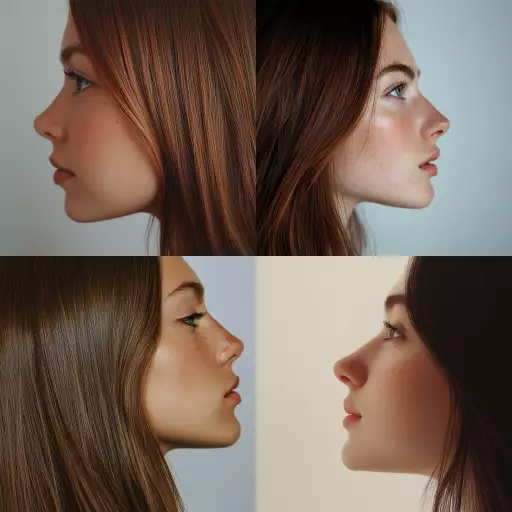
The Algorithmic Muse: Navigating the Ethics of AI-Generated Media
The realm of creativity has long been a domain of human imagination and ingenuity. However, the emergence of artificial intelligence (AI) is blurring the lines between human and machine creation, giving rise to a new era of AI-generated media. From text and music to images and videos, algorithms are now capable of producing compelling content that rivals, and sometimes even surpasses, human output.
This unprecedented technological advancement presents both exciting opportunities and complex ethical challenges. While AI has the potential to democratize creative processes and unlock new forms of artistic expression, it also raises concerns about authorship, authenticity, bias, and the potential displacement of human creators.
Potential Uses of AI-Generated Media
- Content Creation: AI can assist writers in generating storylines, poems, articles, and even scripts.
- Design and Visual Arts: Algorithms can create unique images, patterns, and designs for websites, logos, and artwork.
- Music Composition: AI can compose original music pieces in various genres, assisting musicians in creating new melodies and harmonies.
- Personalized Experiences: AI can generate customized content, such as personalized advertisements, educational materials, or interactive stories, tailored to individual preferences.
Ethical Considerations
The rise of AI-generated media necessitates a careful consideration of its ethical implications.
Authorship and Ownership
When an AI creates content, who owns the copyright? Is it the programmer, the user who provided the input, or the AI itself? Establishing clear guidelines for authorship and intellectual property rights is crucial in this new landscape.
Bias and Fairness
AI algorithms are trained on massive datasets, which can contain inherent biases that reflect societal prejudices. This can result in AI-generated content perpetuating stereotypes or discrimination. It is essential to develop techniques to identify and mitigate bias in training data and algorithms.
Authenticity and Misinformation
The ability of AI to create highly realistic content raises concerns about the potential for misuse, such as generating fake news, deepfakes, or manipulated media to spread misinformation. It is important to develop methods for detecting and verifying the authenticity of AI-generated content.
Impact on Human Creativity
While AI can augment human creativity, there are concerns that it could potentially replace human artists and designers. Striking a balance between leveraging AIs capabilities and preserving the value of human ingenuity is essential.
Future Trends
The field of AI-generated media is rapidly evolving, with ongoing research and development pushing the boundaries of what is possible.
- More Sophisticated AI Models: We can expect to see AI models that are even more capable of generating high-quality, nuanced content.
- Increased Collaboration between Humans and AI: A future where humans and AI work together creatively is likely, with AI tools assisting artists in realizing their visions.
- New Creative Industries: The emergence of AI-generated media will undoubtedly give rise to new industries and job opportunities.
Conclusion
AI-generated media presents both exciting possibilities and profound ethical challenges. As we navigate this uncharted territory, it is crucial to engage in open dialogue, establish clear guidelines, and ensure that AI technologies are used responsibly to enhance, rather than diminish, human creativity.
By fostering a culture of ethical development and mindful application, we can harness the transformative power of AI while safeguarding the integrity and value of artistic expression.
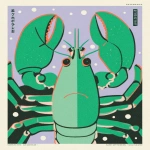

](https://images.ai-img.art/thumbnails/150/bbdf5389a753745c3849030b85bdab871b6ace07d77e1302c413ec7c64a96077.webp)
](https://images.ai-img.art/thumbnails/150/55193cb97cba8efb1fcf192f51faae1d5f85a0e2e5123aecb71a0a5fc13b1904.webp)




](https://images.ai-img.art/thumbnails/150/9f550f77ef99b2001ef7e7778b15c4f5d6eb6298d85ae0899b116d9e58727883.webp)


](https://images.ai-img.art/thumbnails/150/2d39f1d0f7aaa6a0b4332cf371da36e48cf58253020a43bd07a8d077a0caaa68.webp)





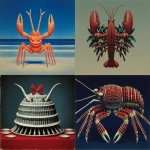
](https://images.ai-img.art/thumbnails/150/944bb4408e45f91d2737ad5cec4189b5b7df32210b450fbe2e01aa6ca214e9d6.webp)
](https://images.ai-img.art/thumbnails/150/2e6e57e32b55e2dfa40b3c4cb960cbf1a411a1a86a5b1b7a29edd9ef6cb53712.webp)
](https://images.ai-img.art/thumbnails/150/4f856c423b667bd786b414c3412688b696b5a4f09adfbc1867f2eabd28f65af3.webp)
](https://images.ai-img.art/thumbnails/150/1f133ce8ae74dd2c10ca55bbaa9b7fd91bd56d8c6878cc3df102cd41fd997b6d.webp)
![**Bûche Salée Œufs Mimosa-Thon : Une Entrée Originale et Savoureuse Cette bûche salée aux œufs mimosa et au thon est une idée originale pour un apéritif ou une entrée festive. Sa texture crémeuse et ses saveurs délicates raviront vos invités. Ingrédients pour 6 à 8 personnes : - 4 grandes tranches de pain de mie sans croûte (type Harrys ou marque U) - 3 œufs durs, cuits 10 min, écalés - 1 petite boîte de thon au naturel (140 g égoutté) - 30 ml de mayonnaise légère (≈ 2 c. à soupe - Amora ou Bénédicta) - 2 c. à soupe de ciboulette fraîche ciselée (ou surgelée) - Sel fin (facultatif) - Poivre du moulin - 1 jaune d’œuf dur râpé pour la décoration (optionnel mais très joli) Préparation : 1. Préparation de la garniture : - Dans un saladier, écrasez les œufs durs avec une fourchette. - Ajoutez le thon égoutté, la mayonnaise, la ciboulette, le sel et le poivre. Mélangez jusqu’à obtenir une préparation homogène. 2. Montage de la bûche : - Étalez une première tranche de pain de mie sur un film plastique. - Répartissez une partie de la garniture sur la tranche de pain. - Recouvrez avec une deuxième tranche de pain et étalez à nouveau de la garniture. Répétez l’opération avec les deux autres tranches. - Terminez par une tranche de pain et enveloppez la bûche dans le film plastique. Réservez au réfrigérateur pendant au moins 2 heures pour bien raffermir. 3. Finition : - Au moment de servir, retirez la bûche du film plastique et placez-la sur un plat de service. - Décorez le dessus avec le jaune d’œuf dur râpé pour une touche colorée. Temps de préparation : 20 minutes Temps de repos : 2 heures Temps total : 2 heures 20 minutes Portions : 6 à 8 personnes Cette bûche salée aux œufs mimosa et au thon est non seulement délicieuse, mais elle apportera également une belle présentation [...]** - Image #1 <@973631140374130748>](https://images.ai-img.art/thumbnails/150/3e07ca6e15e762ca5145e1096de760cb06b32a0e87daeb7e25f5e5dfc15f7c01.webp)
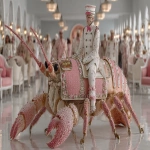
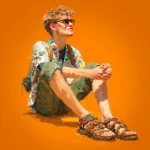


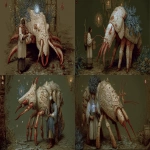
](https://images.ai-img.art/thumbnails/150/dc2309b08ca41ceb7e1deed4d9ab26764cd80c74b7c3527037fa94c17cbf799b.webp)






](https://images.ai-img.art/thumbnails/150/a9aa5eace7df38e4099e0caf324a7f42a9784a0c1acf8cba7b570a3a6d000017.webp)




](https://images.ai-img.art/thumbnails/150/38b5dc634bde7f868194565c0adf1309f3f564778ce26743dfbdfd7c3b1b8435.webp)
